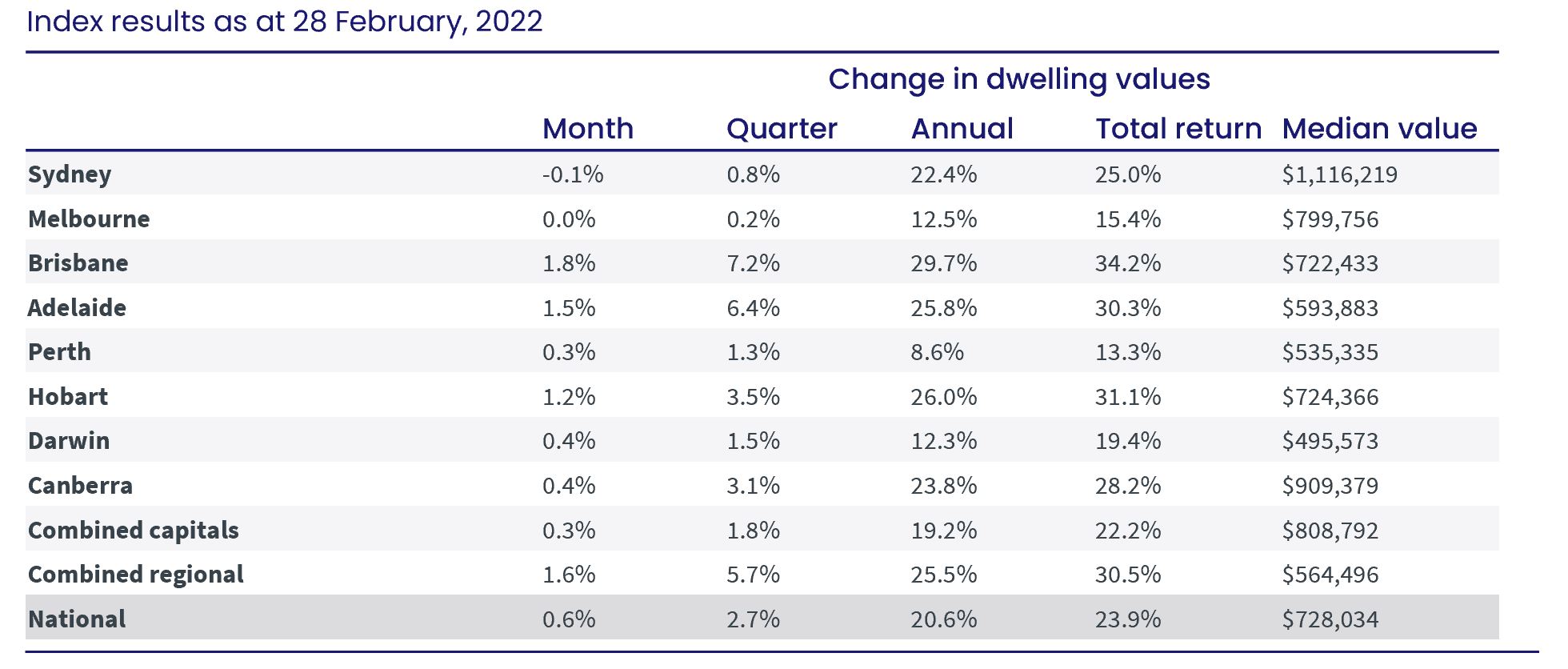
Australia’s overall housing market continued to lose steam, as February results show a softer monthly growth in dwelling values and Sydney reports its first monthly decline.
CoreLogic’s national Home Value Index showed 0.6% growth in February. While this marks the 17th consecutive monthly increase in national median dwelling price, it is also the lowest monthly growth reading since October 2020.
For the first time in more than a year, the median property price in Sydney decreased by 0.1%.
CoreLogic research director Tim Lawless said every capital city and broad ‘rest of state’ region is now recording a slowing trend in gains.
“Conditions are easing less noticeably across the smaller capitals, especially Brisbane, Adelaide and Hobart, where housing values rose by more than 1% in February,” he said.
“Similarly, regional markets have been somewhat insulated to slowing growth conditions, with five of the six rest-of-state regions continuing to record monthly gains in excess of 1.2%.”

The February results came as the Reserve Bank of Australia (RBA) made its decision to maintain the cash rate at 0.1%.
RBA Governor Philip Lowe cited the ongoing conflict in Ukraine a “new major source of uncertainty” that could affect inflation, which the central bank monitors for its cash rate policy.
“Inflation in parts of the world has increased sharply due to large increases in energy prices and disruptions to supply chains at a time of strong demand,” he said.
“The prices of many commodities have increased further due to the war in Ukraine.”
Mr Lowe maintained that the RBA will not make any moves in the cash rate unless Australia’s actual inflation is sustainably within the 2% to 3% target range.
“Inflation in parts of the world has increased sharply due to large increases in energy prices and disruptions to supply chains at a time of strong demand — the prices of many commodities have increased further due to the war in Ukraine,” he said.
—
Photo by @jeffreymwegrzyn on Unsplash